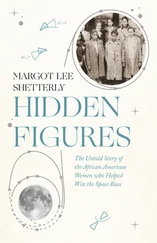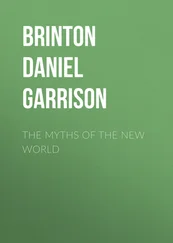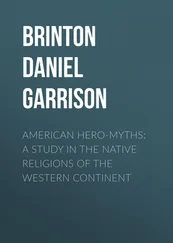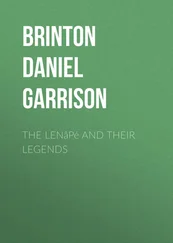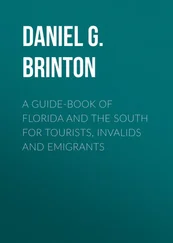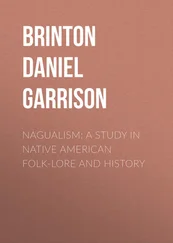Daniel Brinton - The American Race
Здесь есть возможность читать онлайн «Daniel Brinton - The American Race» — ознакомительный отрывок электронной книги совершенно бесплатно, а после прочтения отрывка купить полную версию. В некоторых случаях можно слушать аудио, скачать через торрент в формате fb2 и присутствует краткое содержание. Жанр: foreign_antique, История, История, foreign_edu, на английском языке. Описание произведения, (предисловие) а так же отзывы посетителей доступны на портале библиотеки ЛибКат.
- Название:The American Race
- Автор:
- Жанр:
- Год:неизвестен
- ISBN:нет данных
- Рейтинг книги:4 / 5. Голосов: 1
-
Избранное:Добавить в избранное
- Отзывы:
-
Ваша оценка:
- 80
- 1
- 2
- 3
- 4
- 5
The American Race: краткое содержание, описание и аннотация
Предлагаем к чтению аннотацию, описание, краткое содержание или предисловие (зависит от того, что написал сам автор книги «The American Race»). Если вы не нашли необходимую информацию о книге — напишите в комментариях, мы постараемся отыскать её.
The American Race — читать онлайн ознакомительный отрывок
Ниже представлен текст книги, разбитый по страницам. Система сохранения места последней прочитанной страницы, позволяет с удобством читать онлайн бесплатно книгу «The American Race», без необходимости каждый раз заново искать на чём Вы остановились. Поставьте закладку, и сможете в любой момент перейти на страницу, на которой закончили чтение.
Интервал:
Закладка:
Daniel Garrison Brinton
The American Race / A Linguistic Classification and Ethnographic Description of the Native Tribes of North and South America
PREFACE
So far as I know, this is the first attempt at a systematic classification of the whole American race on the basis of language. I do not overlook Dr. Latham’s meritorious effort nearly forty years ago; but the deficiency of material at that time obliged him to depart from the linguistic scheme and accept other guides.
While not depreciating the value of physical data, of culture and traditional history, I have constantly placed these subordinate to relationship as indicated by grammar and lexicography. There are well-known examples in the ethnography of other races, where reliance on language alone would lead the investigator astray; but all serious students of the native American tribes are united in the opinion that with them no other clue can compare to it in general results. Consequently the Bureau of Ethnology of the United States and the similar departments in the governments of Canada and Mexico have agreed in adopting officially the linguistic classification for the aboriginal population within their several territories.
Wherever the material permitted it, I have ranked the grammatic structure of a language superior to its lexical elements in deciding upon relationship. In this I follow the precepts and examples of students of the Aryan and Semitic stocks; although their methods have been rejected by some who have written on American tongues. As for myself, I am abidingly convinced that the morphology of any language whatever is its most permanent and characteristic feature.
It has been my effort to pay especial attention to those portions of the continent whose ethnography remains obscure. The publications of official bodies, as well as those of numerous societies and individuals, have cleared up most of the difficulties in that portion of the continent north of Mexico; hence it is to the remainder that I have given greater space. The subject, however, is so vast, and the material so abundant, that I fear the reader may be disappointed by the brevity of the descriptions I have allowed to the several stocks.
The outlines of the classification and the general arrangement of the material are those which for several years I have adopted in my lecture courses before the Academy of Natural Sciences, Philadelphia. In fact, this volume may properly be regarded as an expansion of the ninth lecture—that on “The American Race,”—in my lectures on general ethnography, published last year under the title “Races and Peoples.”
In defining the locations of the various tribes, I have encountered many difficulties from their frequent removals. As a rule I have assigned a tribe the location where it was first encountered and identified by the white explorers; though sometimes I have preferred some later location where its activity was longest known.
The great variety of the orthography of tribal names has led me to follow the rule of selecting that which is locally the most usual. This variety has been not a little increased by what seems to me the pedantry of many learned writers, who insist on spelling every native name they mention according to some phonetic system of their own devising—thus adding to the already lamentable orthographic confusion.
I have not thought it advisable to adopt terminations to designate stocks as distinguished from tribes. The Bureau of Ethnology has adopted for stocks the termination an , as “Algonkian,” “Siouian.” This frequently gives terms of strange appearance, and is open to some other objections. It would be desirable to have this question of terminology decided by the International Congress of Americanists, on some plan applicable to French, German and Spanish, as well as English, rather than to have it left to a local body or a single authority.
My thanks are due Mr. H. W. Henshaw, editor of the American Anthropologist , for revising the list of North Pacific Coast Stocks, and various suggestions.
I regret that I have not been able to avail myself of the unpublished material in the Bureau of Ethnology at Washington; but access to this was denied me except under the condition that I should not use in any published work the information thus obtained; a proviso scarcely so liberal as I had expected.
Philadelphia, February, 1891.INTRODUCTORY
RACIAL HISTORY AND CHARACTERISTICS
The differentiation of the species Man into various races, with permanent traits and inhabiting definite areas, took place early in the present geologic epoch. Of these races there are four which are well-marked, each developed in one of the continental areas as they existed at the time referred to. They are the Eurafrican or white, the Austafrican or black, the Asian or yellow, and the American or red race. The color-names given them are merely approximations, and are retained for the sake of convenience, and as expressing a general and obvious characteristic. 1 1 For the full development of these principles, I would refer the reader to my work entitled Races and Peoples; Lectures on the Science of Ethnography (David McKay, Philadelphia.)
The American race was that which was found occupying the whole of the New World when it first became revealed to Europeans. Its members are popularly known as “Indians,” or “American Indians,” because Columbus thought that the western islands which he discovered were part of India; and his error has been perpetuated in the usually received appellation of its inhabitants. To the ethnographer, however, they are the only “Americans,” and their race is the “American Race.”
When investigation proved that the continent was not a part of Asia, but a vast independent land-area surrounded by wide oceans, the learned began to puzzle themselves with the problem of the origin of its inhabitants. The Hebrew myths of the creation of man and of a universal deluge in which the whole species perished except a few in Western Asia, for a long time controlled the direction of such speculations. The wildest as well as the most diverse hypotheses were brought forward and defended with great display of erudition. One of the most curious was that which advanced the notion that the Americans were the descendants of the ten “lost tribes of Israel.” No one, at present, would acknowledge himself a believer in this theory; but it has not proved useless, as we owe to it the publication of several most valuable works. 2 2 Notably, Adair’s History of the North American Indians , and Lord Kingsborough’s magnificent Mexican Antiquities .
Another equally vain dream was that of “the lost Atlantis,” a great island or land-connection which was imagined to have existed within recent times between Northern Africa and South America. A reminiscence of it was supposed to have survived in a story of the Egyptian priests preserved by Plato, that beyond the Pillars of Hercules was a great island which had since sunk in the sea. The account may have referred to the Canary Islands, but certainly not to any land-bridge across the Atlantic to the American Continent. Such did exist, indeed, but far back in the Eocene period of the Tertiary, long before man appeared on the scene. The wide difference between the existing flora and fauna of Africa and South America proves that there has been no connection in the lifetime of the present species. 3 3 For a complete refutation of this venerable hypothesis see an article “L’Atlantide,” by Charles Ploix, in the Revue d’Anthropologie , 1887, p. 291; and de Mortillet, Le Préhistorique Antiquité de l’Homme , p. 124.
Интервал:
Закладка:
Похожие книги на «The American Race»
Представляем Вашему вниманию похожие книги на «The American Race» списком для выбора. Мы отобрали схожую по названию и смыслу литературу в надежде предоставить читателям больше вариантов отыскать новые, интересные, ещё непрочитанные произведения.
Обсуждение, отзывы о книге «The American Race» и просто собственные мнения читателей. Оставьте ваши комментарии, напишите, что Вы думаете о произведении, его смысле или главных героях. Укажите что конкретно понравилось, а что нет, и почему Вы так считаете.

